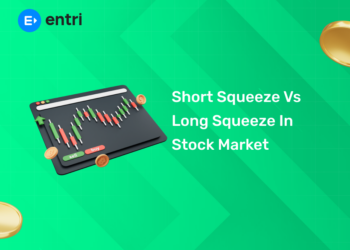Table of Contents
There are several asset classes available to create an investment portfolio, but options may be the least understood of all of them. When carried out properly, this sort of investment, which entails purchasing and selling specified assets at a predetermined price, may be very successful. The truth is that when compared directly to stocks or other investment kinds, options trading tactics are frequently more complicated. This fact shouldn’t deter investors from working with options; rather, it should emphasize the importance of doing extensive study before beginning. To understand everything there is to know about options trading basics, read the following beginner’s guide to options trading.
What Are Options?
Options are contracts that enable a buyer or seller of a certain asset at a predetermined price over a predetermined time frame. An index, an ETF, a commodity, or security could be the underlying asset. They receive their name from the fact that investors have the choice, but are not obligated to, buy or sell when the contract expires. Investors pay a premium to buy options contracts at a strike price to start the process. Then, investors decide whether to buy or sell the options for a profit based on whether the future pricing appears favourable. Alternately, they may allow the contract to lapse, in which case they would merely forfeit the premium sum. Making bets on the stock market is one method for a newcomer to think about options. You predict the direction of a price movement while buying options, and you act accordingly. This sort of investment can be used as a hedge against stock investments, providing some loss protection. Depending on your trading technique, options can also be used to make a steady income. The intrinsic value and the temporal value are the two main determinants of options pricing. The difference between the strike price and the current price determines the intrinsic value, which is the potential profit that could be made. The asset’s potential impact up until the expiration date is represented by the time value, a variable. The time value is essentially a prediction of the asset’s volatility.
Click to study options trading in India
Types of Options
1: What is a stock?
Depending on whether you are buying or selling, you have two different types of options:
Call Options: Contracts known as call options grant investors the right to purchase shares, typically 100, over a specified period. If they anticipate an increase in the value of a stock or other security, investors will purchase call options. They can profit from the higher value when they eventually sell the shares by purchasing these options at a predetermined price.
Put Options: Essentially the opposite, put options let investors sell a specific number of shares over a predetermined time frame. Due to this distinction, traders often aim for a higher strike price to turn a profit because it denotes a larger option value. In essence, you want the price of the security or shares to fall when you buy put options.
What Is Options Trading?
The process of purchasing and selling options on the market is known as options trading. This strategy entails forecasting price fluctuations and have a thorough awareness of the market you are operating in. Options generally attract investors because they frequently need a lower initial commitment than outright stock purchases. Options also allow buyers time to observe the results of their investments because contracts typically last six months.
Join to learn more on options trading in India
How to Trade Options: Strategies for Beginners
Options trading might be more challenging to manage than traditional stock trading, but this is frequently because people approach options without a solid plan in place. Learning about the many investment possibilities before making a move is essential for successful options trading. Many investors attempt to learn as they go, which frequently results in confusion and portfolio losses. You may learn about some of the top beginning options trading methods and basics of option trading today by reading the list below:
Buying Calls or Long Call
For traders who are new to the market as well as those who are confident in the pricing of a particular stock, ETF or index, buying calls is a terrific option trading technique. Investors can benefit from rising stock prices by buying calls, provided they sell them before the options expire. When trading options, this tactic aids in reducing overall risk. The only amount that could be lost is the premium used to purchase the contract; however, the amount that could be made depends entirely on how much the price of the share increases.
Buying Puts or Long Put
Buying puts is identical to buying calls, with the exception that investors anticipate the asset’s value to fall as opposed to rising. Due to the much lower risk, investors frequently adopt this approach instead of short selling. Investors buy puts only take a risk on the premium if the asset rises over the initial strike price. Buying puts may be a low-risk approach to benefit from declining prices depending on the size of the premium.
Short Put
Beginners and option sellers can use the short put as a trading method. Profiting from the premiums paid on options contracts is the goal of this method. Consider Investor A selling a put option to Investor B while employing a short-put strategy. Investor B will probably let the put contract expire if the price of those shares remains the same or rises. Investor A would keep the initial premium following the contract’s expiration and benefit from the deal.
Covered Call
A two-part options trading approach is referred to as the covered call. An investor must first hold underlying stock in the company. To receive a premium, they must then sell a call on that stock. In a covered call, the investor is betting on a flat or slightly declining stock price that will encourage the option buyer to let their contract lapse. The investor will thereafter be able to keep their premium payment. Investors who want to profit from stock ownership when share prices are essentially stagnant frequently employ this tactic.
Married Put
The married put is a combination of the stock and option investment methods. Investors will make these transactions simultaneously, purchasing one put option for every 100 shares of stock they acquire. A put is dependent on share prices falling, in case you recall from before. Investors are thus attempting to protect themselves against a decline in share value by purchasing a married put. When implemented properly, this tactic is utilised to counteract portfolio losses while holding out for rising stock prices.
Click to learn more about the options trading course India
Protective Put
Another tactic used by investors to shield themselves from possible losses is the protective put. Investors would purchase a long put against an asset they already own, protecting if the asset’s value were to fall. In contrast to a married put, which covers assets you are simultaneously buying, a protective put is designed to limit losses from an asset you already possess. This tactic is frequently employed when investors anticipate a temporary decline in share prices.
How to Start Options Trading: Step by Step Guide for Beginners
After learning about some of the different options trading methods, you might still be unsure of how to get started. The steps that follow should give you a general idea of how to start using your understanding of options trading:
- Find a trading strategy that appeals to you as you learn more about the numerous sorts of options trading. Write out your investment objectives, including the amount of income you want to bring in, the amount of money you have to invest, and the pace of portfolio growth you desire. Start looking for a broker to work with once you have a clearer understanding of your financial objectives. They’ll evaluate your financial capacity and assist you in opening an account.
- To pick whatever kind of option you wish to buy, research various stocks (either a put or call option). Remember, you should buy a call option if you anticipate a gain in stock prices. On the other hand, if you anticipate a decline, you could choose to buy a put option. Make sure to thoroughly investigate the assets you are considering because this phase is essential to the success of your overall investment.
- Options trading is only profitable for investors if the contracts stay “in the money.” This means that for call options, the share price must increase above the strike price, but for put options, the share price must decline below the strike price. You must develop the ability to foresee potential changes in stock prices and take appropriate action if you want to succeed at options trading. You will be astonished at how many forecasts you can make with the correct information, albeit it is much easier said than done.
- Before buying options, investors must make one more decision: they must choose the date on which they want the contract to expire. You run the risk of losing money if you are positive that stock prices will rise but are unsure whether it will happen before the contract’s expiration. Predicting the direction and timing of changes in stock value is the key to successful options trading. Contracts can have expiration dates that span from a few days to several years, with short-term contracts carrying higher risks than long-term ones. As you work to narrow down the expiration dates that you feel comfortable with, keep this in mind.
Calculate Your Returns on Systematic Investment Plan (SIP): SIP Calculator
Options are only one of the numerous investment vehicles you may utilise to create a profitable financial portfolio, but it will take some effort on your behalf. Options trading methods are frequently complex and require careful planning to be successful. Doing the work in advance is the best advice that can be given to those just getting started with options trading. Learn about the stock market, look up local brokers, and seek advice from your network. As you start trading options, these procedures will be of great assistance to you. Options may be a very significant compliment to even the most well-established investing portfolios when used properly. Download the entri app to learn more about trading options.
| Achieve Financial Freedom with these courses? | |
| Stock Market Trading Course | |
| Forex Trading Course | |
| Mutual Funds Course |










